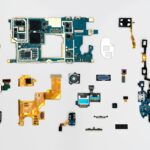
Overview of Circuit Simulation Software
Definition of Circuit Simulation Software
Circuit simulation software refers to programs designed to model and analyze electronic circuits without the need for physical prototypes. These tools simulate electrical behavior in various components, allowing engineers to visualize complex designs and predict performance outcomes before implementation.
Importance of Using Simulation Software
Using circuit simulation software is crucial for several reasons:
- Cost Efficiency: Simulations reduce the need for costly physical prototypes.
- Time Savings: Engineers can quickly test and iterate designs.
- Risk Mitigation: Identifying design flaws early helps avoid potentially disastrous outcomes.
For example, a friend recently used LTspice to test a new amplifier design and discovered stability issues before building the circuit, ultimately saving time and resources. This illustrates how simulation software can make a significant difference in the design process.

Comparison Metrics for Circuit Simulation Software
Cost Analysis
When selecting circuit simulation software, cost is a primary factor. Many options range from free to premium priced software. Considerations should include:
- Licensing Fees: Some tools may require upfront costs or annual subscriptions.
- Hidden Costs: Check for additional fees for updates or required components.
A friend of mine decided to try Multisim after evaluating the affordability of various options and was pleasantly surprised by its overall value.
User Interface Comparison
The user interface (UI) significantly affects usability. A clean, intuitive UI makes simulations a breeze:
- Ease of Navigation: Look for software that allows quick access to tools.
- Customization Options: Some platforms offer tailored UI environments.
For instance, OrCAD PSpice offers extensive customization, helping users set up their workspace to suit their preferences.
Simulation Capabilities Assessment
Finally, the simulation capabilities of the software must be assessed. Important aspects include:
- Types of Simulations: Check if the software supports transient, AC, or DC simulations.
- Speed and Accuracy: Users want both rapid results and precise data.
For example, while testing circuits, my colleague found LTspice provided faster simulations with a high degree of accuracy compared to other tools.

Popular Circuit Simulation Software
LTspice
LTspice is a widely used free simulation tool known for its efficiency and speed. It excels in simulating analog circuits and provides a reliable environment for testing designs.
- Advantages: Cost-free, powerful simulation capabilities, extensive community support.
- Disadvantages: The learning curve may be steep for beginners.
A friend once praised LTspice for helping him optimize his PWM circuit quickly.
TINA-TI
TINA-TI, offered by Texas Instruments, is another notable option. It’s particularly beneficial for those focused on TI components.
- Advantages: User-friendly interface, comprehensive component library, good for educational purposes.
- Disadvantages: Limited to Texas Instruments products.
An electrical engineering student I know loved TINA-TI for its straightforward approach.
Multisim
Multisim is a highly regarded tool in both academia and industry, offering a robust simulation environment. It is ideal for beginners and experts alike.
- Advantages: Intuitive UI, detailed analysis tools, extensive component library.
- Disadvantages: Subscription costs can be high.
I personally enjoyed using Multisim during a college project, as it made complex simulations feel accessible.
OrCAD PSpice
Lastly, OrCAD PSpice is a powerful tool targeted toward experienced engineers. It’s well-suited for complex simulations and designs.
- Advantages: Advanced simulation capabilities, reliable performance.
- Disadvantages: Higher cost and steeper learning curve.
A colleague found OrCAD PSpice invaluable for a recent project, thanks to its powerful analysis tools that provided deep insights into circuit performance.

Feature Analysis of Circuit Simulation Software
Accuracy of Simulations
Accuracy is paramount in circuit simulation software. The possibility of errors in simulations can lead to costly design changes down the line.
- Calculation Precision: Tools like LTspice are known for their high precision, making them favorites among engineers.
- Real-World Tolerance: Consider how closely the software mimics real-world conditions.
In my experience, accuracy in LTspice prevented a major flaw in a power supply design I was working on.
Component Library Comparison
The variety and quality of components available in the software’s library can greatly influence design flexibility.
- Breadth of Options: A rich component library allows for more complex designs.
- Frequency of Updates: Regular updates can keep libraries current with new technologies.
For instance, Multisim’s extensive library has made it my go-to for diverse circuit designs, while OrCAD PSpice provides a wide range of high-performance components.
Technical Support Evaluation
Evaluating the technical support offered by simulation software is essential for efficient workflows.
- Availability of Resources: Comprehensive documentation, tutorials, and community forums can ease the learning curve.
- Response Time: Quick resolutions to issues can prevent unnecessary downtime.
A colleague who used TINA-TI frequently praised its extensive resources, which helped him navigate challenges efficiently during an important project.






